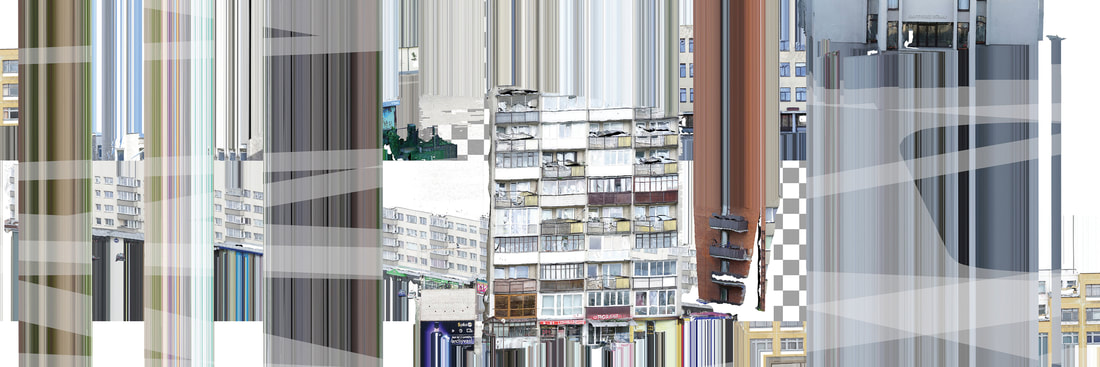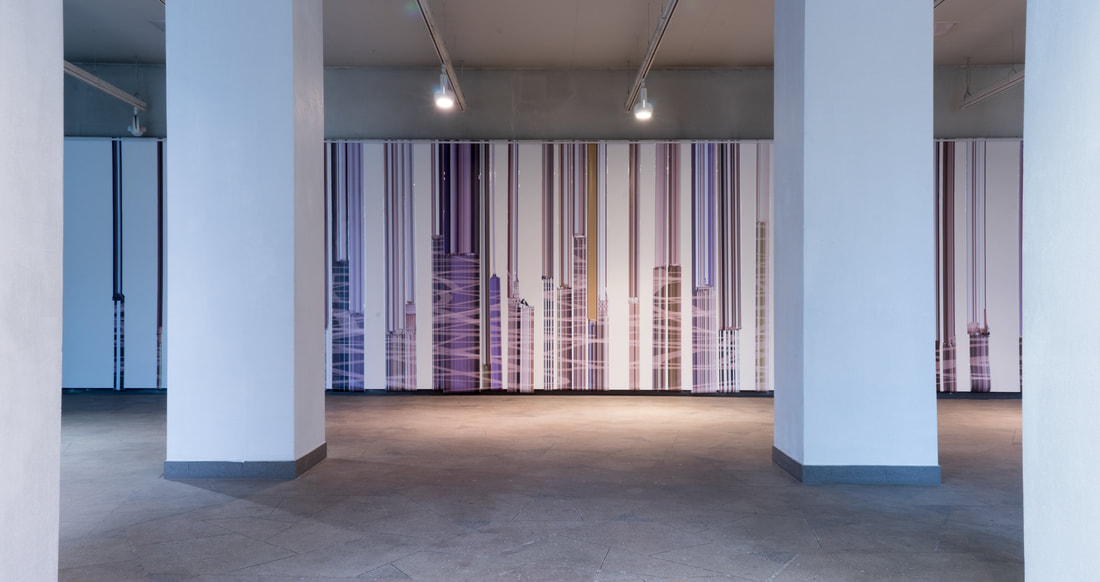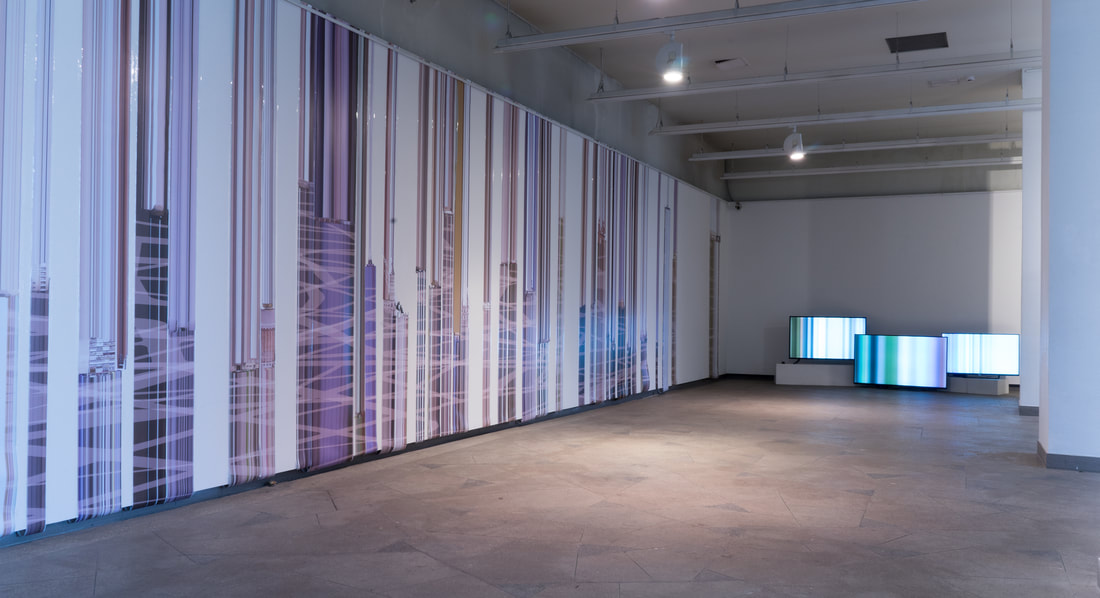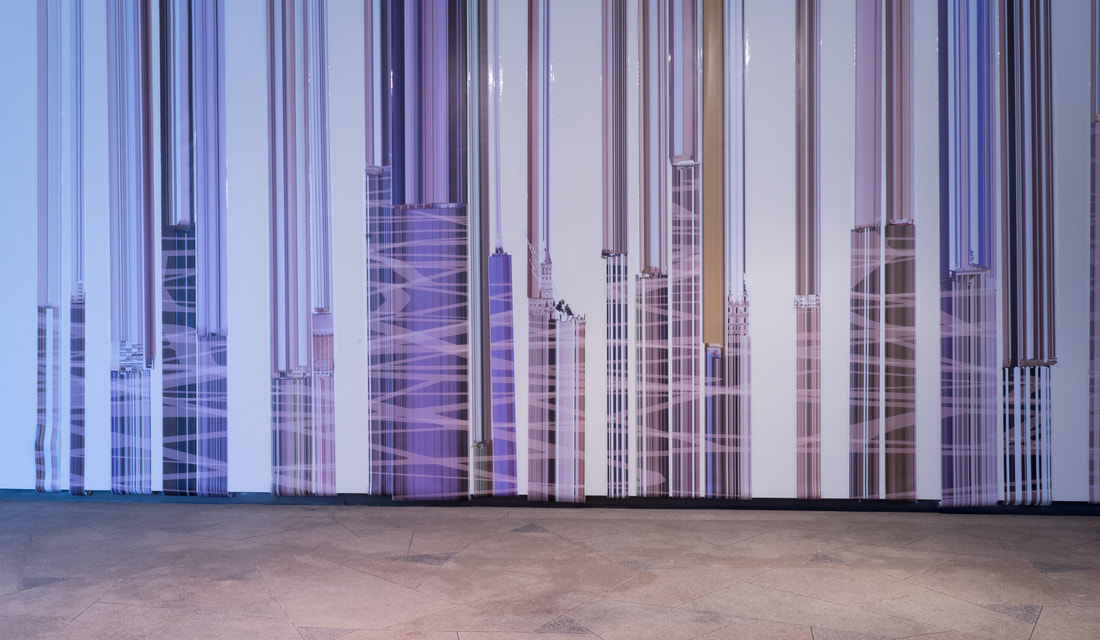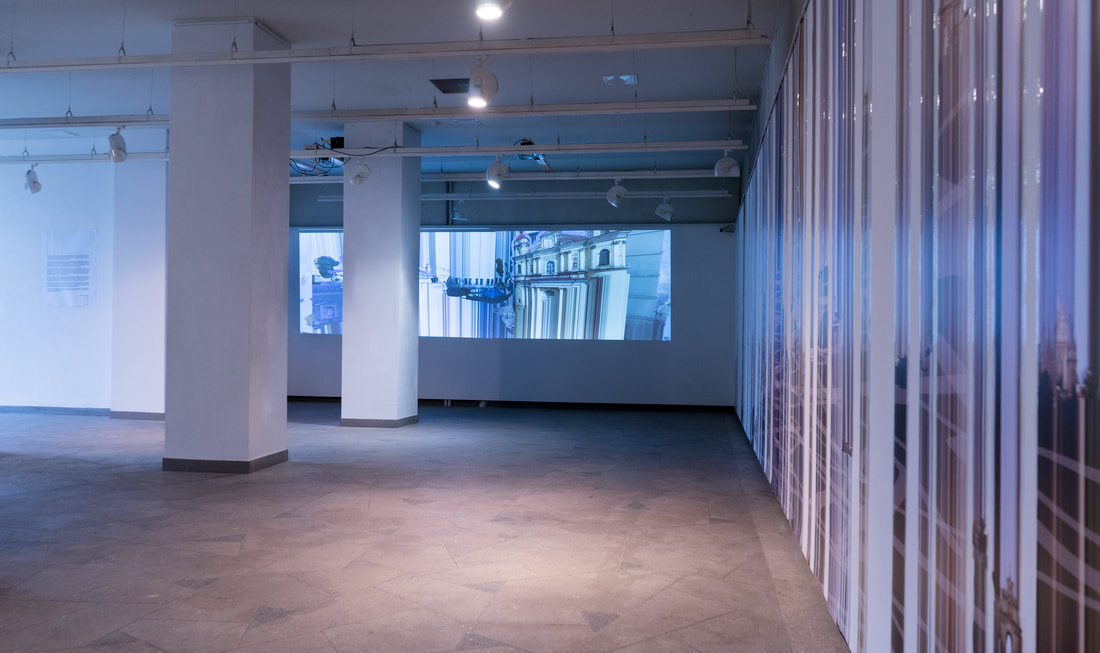Dalia Mikonytė ir Adomas Žudys
City Studies // Miesto Studijos
Vilnius, Šiauliai, Panevėžys, 2017
Exhibition curator // Parodos kuratorė - Laima Kreivytė.
Sound // Garsas - Pijus Džiugas Meižis.
Photogrammetry - a way of scanning static object by taking and arranging an array of photos, and piecing them together to form a 3d textured object. By editing the models, introducing “glitch” aesthetics and piecing together building facades, surreal and ephemeral perspectives of city landscape are formed. The creation of such composition is partially independent from us - technology picks certain scales, angles and glitches of the models, and thus plays part in the creation of work.
Video and printed works, which are the results of this partially self-generating product transfers the viewer into a transformed reality. Since materiality is divisible, in our work old and new, digital and analog are intertwined.
Understanding of time and space is true for visible, and not ultimate, reality. This visible reality, based on sense-experience, is generated hand-in-hand with technology. Since sense-experience is dominated by accident, we trust our sentiments and ego-documentary when collecting material and forming cityscapes. These cities are the ones we experienced most vividly, whose maps and meanings we know better than any formal theory.
Together with technology, we pay attention to city’s architectural, sculptural and natural monuments, we create new virtual and dynamic structures, which, in the near future, can take root in public space.
//
Fotogrametrija - būdas skenuoti statišką objektą padarant rinkinį nuotraukų, ir, naudojant kompiuterinę technologiją, sukurti iš jų tekstūrinį trijų dimensijų virtualų objektą. Apdirbant objektus 3D programomis, įvedant „trikdžio“ (glitch) elementą, ir susiuvant 3D pastatų fasadus ar skulptūrinius paminklus vienas su kitu, susidaro keista, vaiduokliška ir siurrealistinė miesto perspektyva. Ji tik iš dalies priklauso nuo mūsų - skirtingus pastatų dydžius, kampus, trikdžius ir estetinį kodą išgeneruoja pati technologija.
Video įrašai ir skaitmeniniai atspaudai, kurie yra galutiniai šio iš dalies save generuojančio projekto produktai, perkelia mus ir žiūrovus į transformuotą realybę. Materijoje nesama nieko nedalaus, todėl šiame virtualiame miesto ture sena, nauja, tradiciška ir skaitmeniška yra susipynę, o virtuali ir aktuali realybės mainosi vietomis.
Laiko ir erdvės samprata priklauso ne tikrajai realybei, o tik regimybei. Tą regimybę, paremtą jusline patirtimi, generuojame kartu su technologija. Be juslinės patirties realiame vaizde, kaip ir virtualioje realybėje, veikiausiai viešpatauja atsitiktinumas, todėl pasikliauname sentimentais ir egodokumentika. Tai mūsų stipriausiai išgyventi miestai, kurių žemėlapius ir alfabetus žinome geriau nei realią teritoriją.
Kartu su technologija atsigręžiame į jau esamus statiškus miesto architektūrinius, skulptūrinius, gamtos paminklus ir kuriame naujus virtualius bei dinamiškus antipaminklus, kurie netolimoje ateityje gali įsitvirtinti vietoje realaus miesto peizažo.
Linas Bliškevičius apie parodą: https://www.7md.lt/fotografija/2017-11-24/Miesto-tyrimas-is-kavos-tirsciu
//
Dr. Maria Danilovich (Belarusian State University),
Dr. Maxim Yosefi (University of Goettingen)
Reflections on the “City Studies”
The “City Studies” may certainly attract the audience by a fresh standpoint towards cities as the most representative examples of the space arranged by human civilisation. The combination of the city landscapes, selected by the artists, and surreal perspectives of the sites, randomly created by technology, results in quite unexpected visual effects. The latter are interesting not only due to the particular technique and visual semiotics behind them, but also to the hidden drive to explore the landscapes of other cities, familiar to the viewer, through the offered lenses.
The new visual approach by Dalia Mikonytė and Adomas Žudys to art exploration of the city landscapes and atmospheres helps the audience to find themselves within the surreal 3D space consisted of the randomly linked elements of the city streets. Their art manner makes the viewer to take a plunge into the densely saturated atmosphere of the particular place, transmitted in a very detailed way through the curved 3D. Among the most striking visual effects are fantasies that extrapolate familiar objects downwards, as if under the earth surface, or make us imagine a flat city landscape transformed into an “ant hill” on the cliff, similar to small coastal Italian towns.
Photogrammetry as the key tool for the “City Studies” sets unexpected associative links and leads the audience to develop an updated comprehension of space and time. Combined with the sound as an important auxiliary tool, it creates the special state of “meditation on the city”. The initial impulse for it is given by the artists, but its path is individual for each viewer. The dialogue between the artist’s memory, edited by modern technology, and the fantasy of the viewer gives us the opportunity to make our independent sketching of the cities under study.
